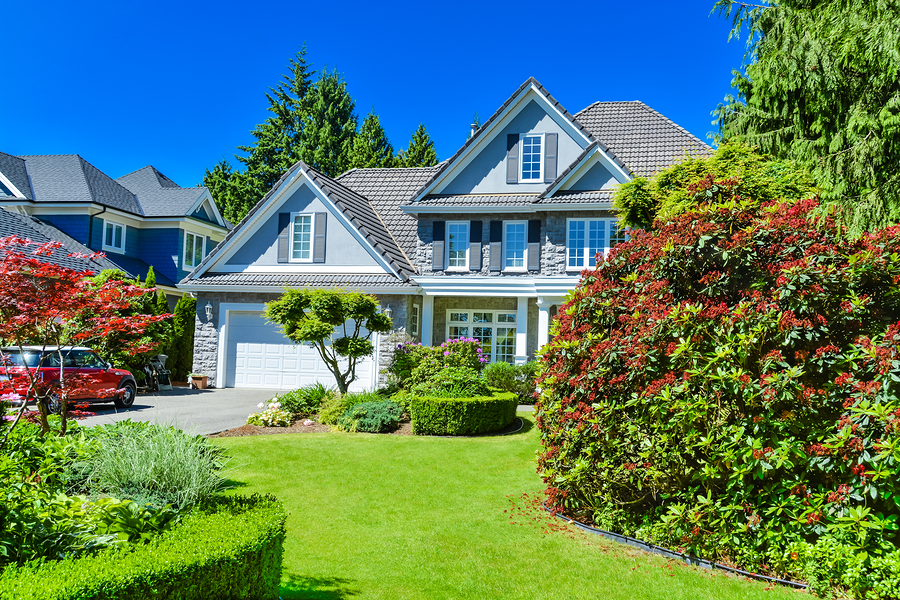In outdoor design, achieving harmony is more than just arranging elements—creating a balanced and visually captivating landscape that harmonizes with its surroundings. This article delves into the art of outdoor harmony, exploring key landscaping techniques that transform outdoor spaces into tranquil retreats and stunning showcases of nature’s beauty.
Principles of Landscape Design
Table of Contents
Landscape design principles go beyond aesthetics; they guide how elements interact to create a cohesive and harmonious outdoor space. Balance can be achieved through symmetrical arrangements, where identical elements are mirrored on both sides or asymmetrical designs that balance different elements based on their visual weight.
Proportion ensures that the size and scale of elements relate harmoniously to each other and to the overall space. Unity ties the landscape together by creating a cohesive theme or style, while variety introduces diversity and interest, preventing monotony. Focal points serve as visual anchors, drawing attention and creating focal areas that command the viewer’s gaze.
Understanding Your Space
Assessing your outdoor space involves more than just its physical dimensions; it requires understanding its microclimates, soil composition, drainage patterns, and existing vegetation. Conduct soil tests to determine pH levels and nutrient content, influencing plant selection and health.
Consider microclimates, such as sunny spots, shaded areas, windy zones, or low-lying areas prone to water accumulation, and choose plants and hardscaping materials accordingly. Evaluate views from different vantage points to identify focal points and design opportunities.
Designing Functional Zones
Functional zoning in landscaping is about creating distinct areas that serve specific purposes and activities.
- Entertainment zones may include outdoor kitchens, dining areas, fire pits, or seating arrangements for social gatherings.
- Relaxation zones can feature hammocks, lounge chairs, or meditation spaces surrounded by calming greenery.
- Practical zones like pathways, storage areas, and utility spaces are essential for circulation, organization, and maintenance.
Define boundaries between zones using plantings, hardscaping elements, or changes in elevation for clear delineation and flow.
Plant Selection and Placement
Choosing plants goes beyond aesthetics; it involves understanding their growth habits, maintenance needs, and environmental compatibility. When selecting plants, consider factors like plant hardiness zones, sunlight requirements, soil moisture levels, and wind exposure.
Group plants with similar water and care needs together to simplify maintenance tasks. For layered and dynamic plantings, use taller plants as backdrops or screens, mid-sized plants as fillers or accents, and low-growing plants as ground covers or borders. Pay attention to seasonal changes and plan for year-round interest with evergreens, flowering shrubs, and seasonal blooms.
Hardscaping Elements
Hardscaping elements such as patios, walkways, walls, and structures add structure, functionality, and visual interest to outdoor spaces. Choose materials that complement your home’s architecture and natural surroundings, such as stone, brick, wood, or composite.
Consider the practicality of hardscaping features, such as slip-resistant surfaces for pathways, durable materials for high-traffic areas, and proper drainage to prevent water pooling. Incorporate design elements like curves, angles, patterns, and textures to add depth and character to hardscaped areas.
Consider incorporating large outdoor planters that make a bold statement and serve as focal points in your outdoor space for larger plants or smaller trees.
Water Features and Lighting
Water features enhance the sensory experience of outdoor spaces by adding movement, sound, and visual interest. Choose water features that fit the scale and style of your landscape, whether a bubbling fountain, tranquil pond, or cascading waterfall. When designing water features, consider the sound effects, wildlife attractions, and maintenance requirements.
Outdoor lighting is equally important for safety, ambiance, and highlighting key features. Use a combination of ambient, task, and accent lighting to illuminate pathways, focal points, and outdoor living areas. For sustainability, incorporate energy-efficient lighting options, such as LED fixtures or solar-powered lights.
Sustainable Landscaping Practices
Sustainability in landscaping involves minimizing environmental impact, conserving resources, and promoting biodiversity. Use native plants adapted to the local climate and soil conditions, as they require less water, fertilizer, and maintenance. Implement water-efficient irrigation systems, such as drip irrigation or smart controllers, to reduce water waste and promote healthy plant growth.
Choose permeable paving materials for driveways and walkways to allow rainwater infiltration and reduce runoff. Incorporate rain gardens, bioswales, or green roofs to manage stormwater and improve water quality. Use organic mulches, compost, and natural fertilizers to enrich soil health and reduce the need for synthetic chemicals. Design with wildlife habitat in mind, incorporating pollinator-friendly plants, bird feeders, and sheltering habitats for beneficial insects and animals.
Maintenance and Care
Regular maintenance is essential for preserving the beauty and functionality of outdoor spaces. Develop a seasonal maintenance calendar that includes pruning, fertilizing, mulching, weeding, and pest control. Monitor plant health for signs of pests, diseases, or nutrient deficiencies and take corrective actions promptly.
Inspect hardscaping elements for wear and tear and repair any damages or hazards. Clean water features regularly to prevent algae buildup and maintain water clarity. Adjust irrigation schedules based on seasonal weather patterns to conserve water and avoid overwatering. Consider professional landscape maintenance services for specialized tasks or large-scale projects.
Incorporating Personal Style
While mastering landscaping techniques, don’t forget to infuse your style and preferences into your outdoor space. Choose decor elements, colors, and materials that reflect your taste and lifestyle. Add unique touches like art installations, sculptures, or custom-built features that make the landscape uniquely yours. Outdoor spaces are extensions of indoor living, so create a cohesive design that harmonizes with your home’s interior and exterior aesthetics.
Conclusion
Mastering landscaping techniques is a journey of creativity, balance, and harmony. By understanding design principles, assessing your outdoor space, creating functional zones, selecting plants and hardscaping elements thoughtfully, incorporating sustainable practices, maintaining with care, infusing personal style, and drawing inspiration from successful examples, you can create an outdoor oasis that delights the senses and nurtures the soul. Embrace the art of outdoor harmony and watch your landscape bloom into a masterpiece of natural beauty.
Image Source: BigStockPhoto.com (Licensed)
Related Categories: Garden, Reviews








